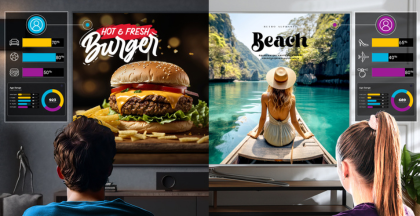Stay on top of our latest news and hear from our thought leaders on the innovations and industry trends that hold promise for the future.
-
Broadband
Broadband Solutions
Products
Support & Services
Resources
News & Events
Broadband Platforms and ApplicationsDistributed EdgeCentralized Edge- TVS Cable’s Experience - Enhancing Broadband Service with cOS & cOS Central
- Telpol brings faster speeds with a converged platform for Fiber and DOCSIS
- Save on Power & Gain Network Agility with vCMTS & DAA
- Access Communications & cOS in DAA
- vCMTS & DAA for Westman Communications Group
- Deliver Next-Gen Broadband Services with vCMTS & DAA

SeaStar optical node for MDUs. Multi-gigabit broadband solutions.
Experience multi-gigabit broadband speeds for lower-density MDUs with SeaStar's optical node, simplifying deployment and enhancing subscriber quality without rewiring.

Discover Harmonic's BABA-Compliant Solutions
Explore our compliant products and join the conversation about advancing broadband equity.

Technical support
Our products are our expertise. Report a problem whenever you need.
OLT and ONT Interoperability: A New Path Forward
Break free from vendor lock-in! Explore how Open ONT is revolutionizing fiber networks with seamless interoperability and greater flexibility.

Delivering PON Fiber and DOCSIS on a Converged Broadband Platform
Industry leaders discuss the feasibility and benefits of a unified DOCSIS and PON broadband access platform.
-
Video
Video Solutions
Platforms & Products
Support & Services
Resources
News & Events
SaaS & Cloud Streaming Platforms
NAB 2025: AI-Powered Hybrid Solutions
Join Harmonic at NAB 2025 to explore our latest AI-driven hybrid on-premises and in the cloud solutions that are revolutionizing video streaming and broadcast delivery. "I've worked with a lot of third-party vendors, and none of them have really been as supportive of their platforms and hands-on as much as Harmonic."
"I've worked with a lot of third-party vendors, and none of them have really been as supportive of their platforms and hands-on as much as Harmonic."
How Cloud-Based Playout-to-Delivery Drives Cost Efficiency
Broadcasters are increasingly moving their playout workflows to the cloud for enhanced scalability, cost savings, and faster delivery. Learn how a unified playout-to-delivery solution can simplify your operations, reduce cloud costs, and improve efficiency.

Driving Results with Addressable Advertising
Exploring its nuances and how it revolutionizes the advertising landscape.
- News & Resources
- About
